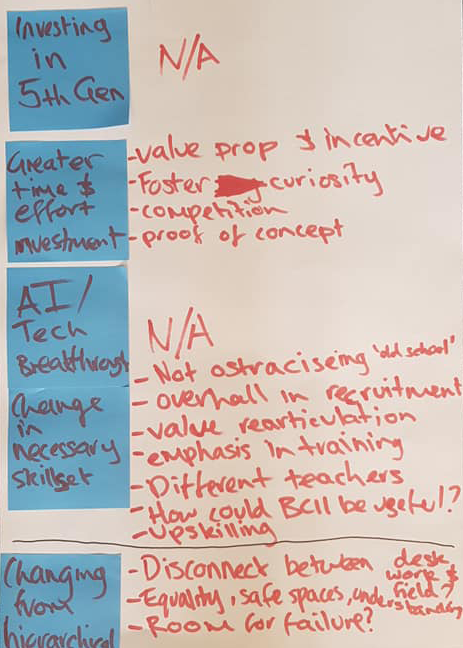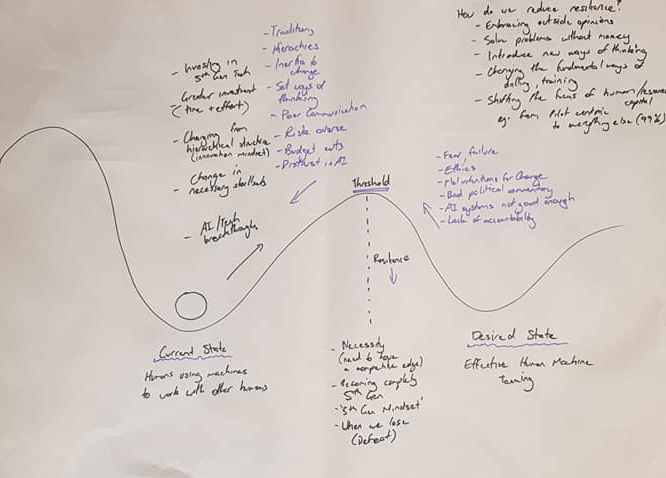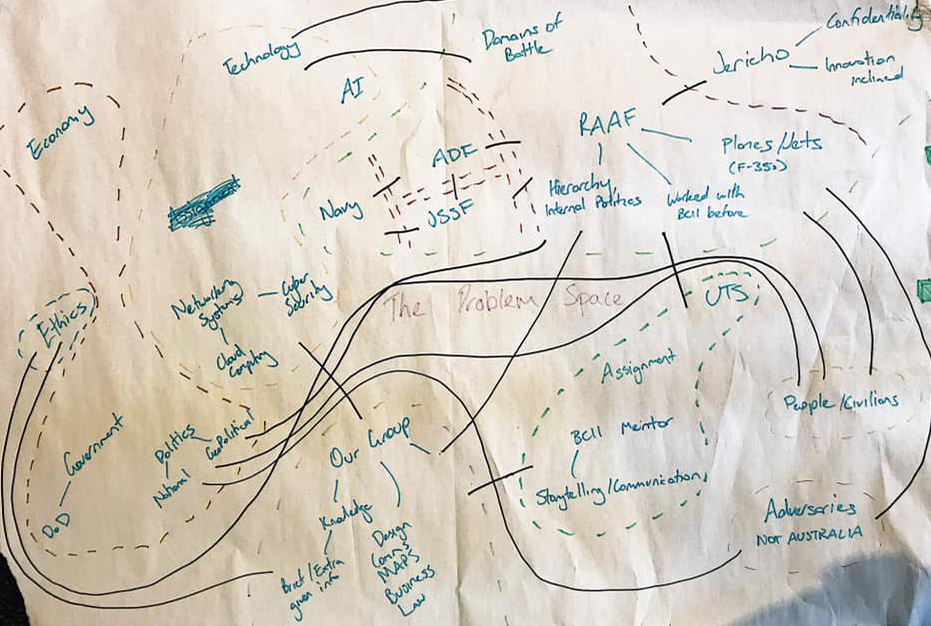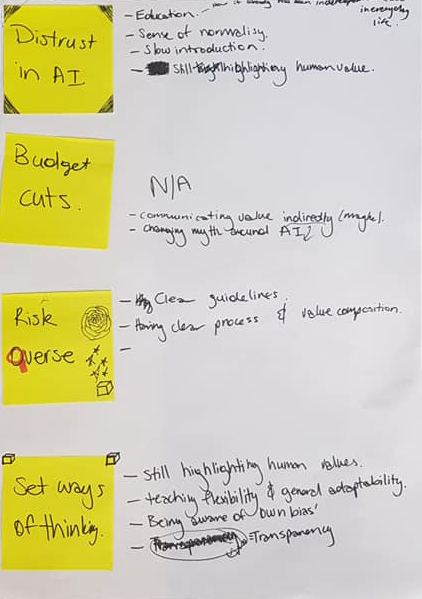Royal Australian Air Force x University of Technology Sydney
A collaboration with Rebecca Nash, Danae Kefallinou,
Thomas Entwisle, Adrian Chin Quan and Joshua Clarkson
Thomas Entwisle, Adrian Chin Quan and Joshua Clarkson
The Challenge
At the genesis of this project we were presented with the original problem statement:
Identify the human cognitive attributes required to conduct effective human-machine teaming in future military operations.
Identify the human cognitive attributes required to conduct effective human-machine teaming in future military operations.
In breaking down this problem statement we were left with a number of areas to explore. We felt that the brief did not tackle the pertinent challenges slowing AI integration. Namely, the statement framed AI implementation itself as the primary problem, rather than addressing underlying organisational issues and tension points hindering this integration. This brought us to:
‘How might we shift Australia’s Air Force Personnel, Processes and Principles to an adaptive mindset, such that emerging technologies can be seamlessly integrated.’
as a means to help shift their operations, thinking and values to become more adaptable to emerging technologies.
Our Approach
Given the complexity of the problem space at hand, and the numerous underlying tension points and issues, our approach to the problem was also layered.
The first tier of our proposal is a set of research-backed ‘core values’. These values have been distilled from research into a number of organisations in different fields that have either successfully undergone, or are currently in the process of undergoing, radical changes. This includes the New York Times and the Philadelphia 76ers Sports Team. We worked through these insights, seeking common elements within them. These elements were then articulated into the 6 core values we are presenting. These values are designed to act as an overarching guide, both to the implementation of our proposed initiatives as well as any others in the RAAF’s wider shift towards a 5th Generation Air Force.
The second tier of our proposal is a series of small initiatives or nudges to be implemented within the RAAF as a means of shifting towards a more adaptive mindset. Each of these initiatives is easily implementable and speaks to one or more of the core values.
The third and final tier of our proposal is Project Currawong, a simulation designed as a safe to fail environment to test these initiatives in the unique circumstances that the RAAF operates under, and make changes accordingly.
Taking a systems thinking approach to the revised problem statement was paramount in transforming the Air Force. Understanding that the RAAF is a complex organisation, mapping the processes and systems within the organisation and identifying the ‘pain points’ that inhibit innovation and adaptability allowed interventions to emerge that can improve the Air Force’s overall system.





Learnings
From this experience, I was able to massively improve my communication, project management and organisation skills. As a designer, the unique experience of working with the RAAF is something I never thought would happen, and my ability to think complexly and on a broader systems level was challenged many times throughout the project. It taught me the importance of constant, clear communication between collaborative partners, and techniques of developing great working environments for transdisciplinary projects such as this.